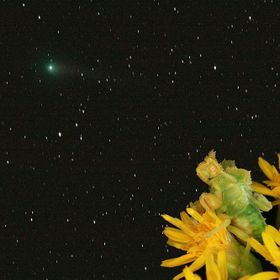

Drphotomoto
FollowI love to capture color generated by the process of thin film interference. The Pipevine shows this in its metallic blue coloration which only appears at the r...
Read more
I love to capture color generated by the process of thin film interference. The Pipevine shows this in its metallic blue coloration which only appears at the right angle with respect to the sun. Soap bubbles and oil slicks generate color through this process of TFI. Besides that the butterfly is simply gorgeous as are thistle blooms!
Read less
Read less
Views
88
Likes
Awards
Top Shot Award 22
Winter Award 2020
Top Choice
Superb Composition
Absolute Masterpiece
Outstanding Creativity
Superior Skill
Peer Award
Magnificent Capture
Categories
Same photographer See allBehind The Lens
Discover more photos See all
Behind The Lens
Location
I took this photo on my farm in Ellerbe, NC. There was a row of thistle running north to south. I shot this pic at 10:00 am with the sun behind my back so that the suns rays would illuminate wings at the right angle to bring out the blue coloration characteristic of this butterfly.Time
It was early morning so that the sun would best reflect off the wings.Lighting
The blue coloration is only visible when white light strikes the wings at the right angle. Otherwise the blue areas look black. This property is due to the process called thin film interference. This effect is also seen with soap bubbles and oil slicks causing a rainbow of colors. Butterflies scales are less fluid so the colors are predictable though there is some iridescence.Equipment
Canon with 180 mm macro lens. Ring flash used to enhance the blue coloration. Camera was supported with monopod.Inspiration
I love to capture the color produced by optically active butterfly scales. Getting the angle right determines the amount of color you can capture and I love the challenge. Other butterflies have these optically active scales. The Red Spotted Purple is one that is particularly beautiful.Editing
I used Photoshop to better frame the photo and enhance color.In my camera bag
I usually carry a 100 mm macro lens, a ring flash, a bulb to blow dust from the sensor, a 300 mm zoom lens, extra batteries, and a monopod. On trips I substitute a 50 mm macro lens to reduce weight. With a lighter lens I don't need the monopod but if I have it I use it to minimize motion artifact. With low light shots I often use a remote shutter control to minimize motion artifact. Tripods are particularly useful for this reason.Feedback
Watch the butterflies in the sun and notice the angle that produces the best color effects. When you think you know what angle to shoot be patient and wait for the butterfly to perch for you at that angle. Takes a lot of patience.

























![Two male black-veined white butterflies [Aporia crataegi] roosting on a Carthusian pink. by HenrikSpranz](https://cdnpt01.viewbug.com/media/mediafiles/2024/01/17/102725792_widepreview400.webp)


















